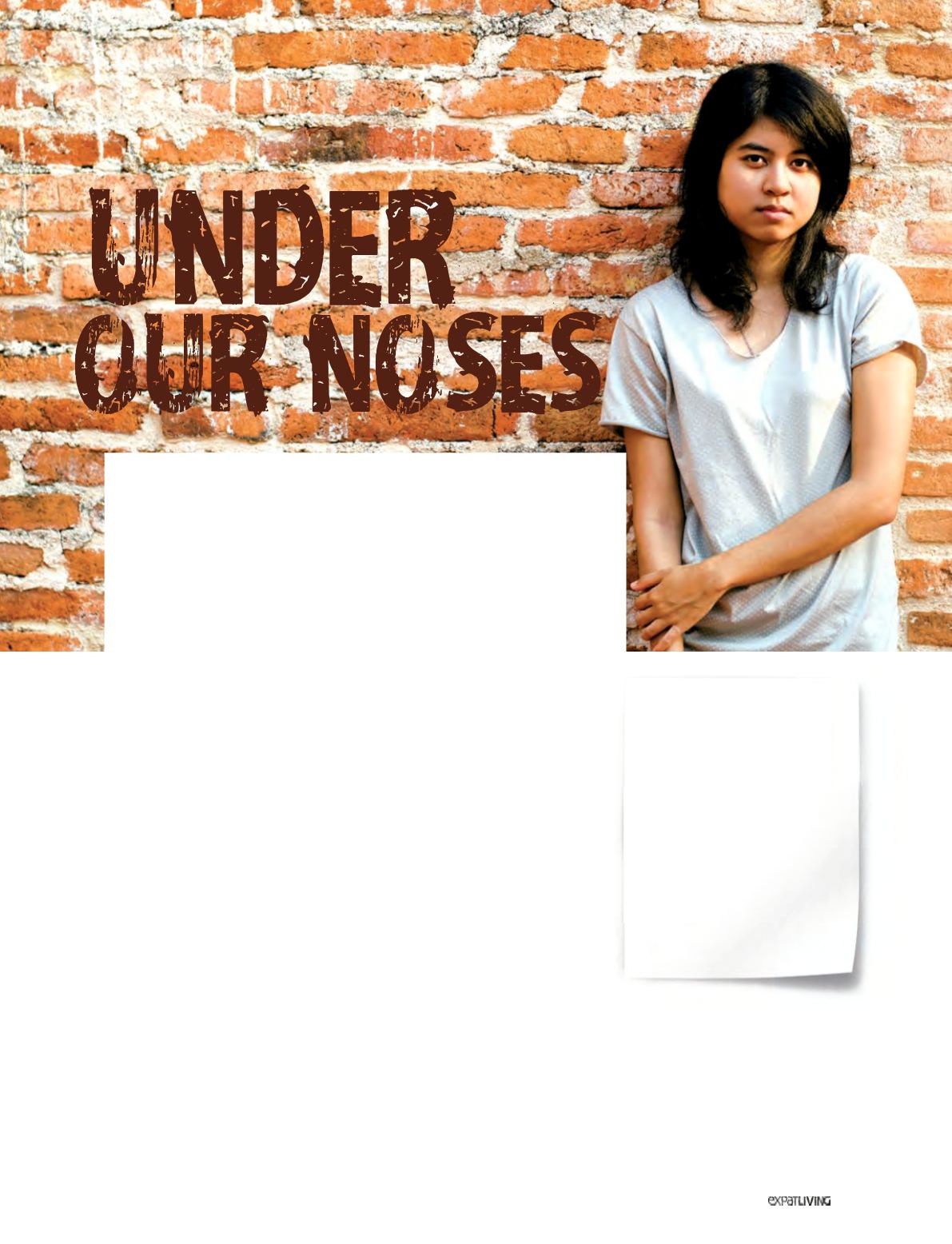

HUMAN TRAFFICKING
167
November14
By Katie Roberts
O
neofthemostcomprehensive
g l o b a l r e s o u r c e s o n
the subject is the annual
Trafficking In Persons Report
(state.gov/j/tip), an assessment of the
trafficking situation in every country. It
makes for incredibly sobering reading.
The report is released by the US State
Department, one of many international
organisations, governments and NGOs
working to raise awareness and to
advance anti-trafficking reforms, combat
trafficking and contribute resources to
prevention, protection and prosecution
programmes.
While most countries use the United
Nations definition of people trafficking
(
see text box
) the definition is simplified
in the US; there, trafficking is deemed
to cover all of the activities involved in
reducing someone to, or holding them
in, a condition of compelled service;
examples include men trafficked for
the removal of their kidneys, children
trafficked to work in mines or as soldiers,
and women and girls forced to work in
domestic servitude.
The UN definition of
trafficking
“The recruitment, transportation,
transfer, harbouring or receipt of
persons by means of the threat
or use of force or other forms of
coercion, of abduction, of fraud,
of deception, of abuse of power,
or of a position of vulnerability
or of the giving or receiving of
payments or benefits to achieve
the consent of a person having
control over another person, for
the purpose of exploitation.”
According to the International Labour
Organization, many factors contribute to
individuals being vulnerable to forced
labour. These include living in poverty,
working in unskilled occupations
or informal work sectors, lacking
educational opportunities or literacy,
and needing to migrate.
What about Singapore?
A country can be considered a “source”,
“transit” or “destination” country, or a
combination of the three. According to
the State Department report, Singapore
is a destination country for men, women
and children from China, India, the
Philippines, Burma, Indonesia, Sri Lanka,
Bangladesh, Thailand andVietnam, and a
transit country for Cambodian andFilipino
men subjected to forced labour on fishing
vessels that stop in Singapore’s ports.
In 2010, the Singapore government
e s t a b l i s h e d t h e I n t e r - Ag e n c y
Taskforce on Trafficking-in-Persons,
a multi-agency group tasked with
“implementing a National Plan of
Action to combat trafficking through
prevention, prosecution, protection and
partnership”. A spokesperson from the
Agency says, “We will continue to work
with partners to raise public awareness,
facilitate victim reporting, refine the
investigation processes and enhance
the provision of care to victims.”
While Singapore is one of 31 countries
that are not party to the Palermo Protocol,
It can be easy to overlook the darker aspects of life while living in
Singapore’s relative safety and affluence. But spare a thought for people
who have been trafficked into conditions of slavery – an estimated 11
million inAsia alone, some under our very noses. While the sex industry
is the well-known face of trafficking, there are widely documented
cases in the fishing, mining, clothing, food processing and construction
industries, too. Trafficked people are a hidden population; no country
is immune from the problem. It’s an issue that cuts across borders,
cultures and laws – an abhorrent industry in human misery.
Trafficking Images UNWomen



















